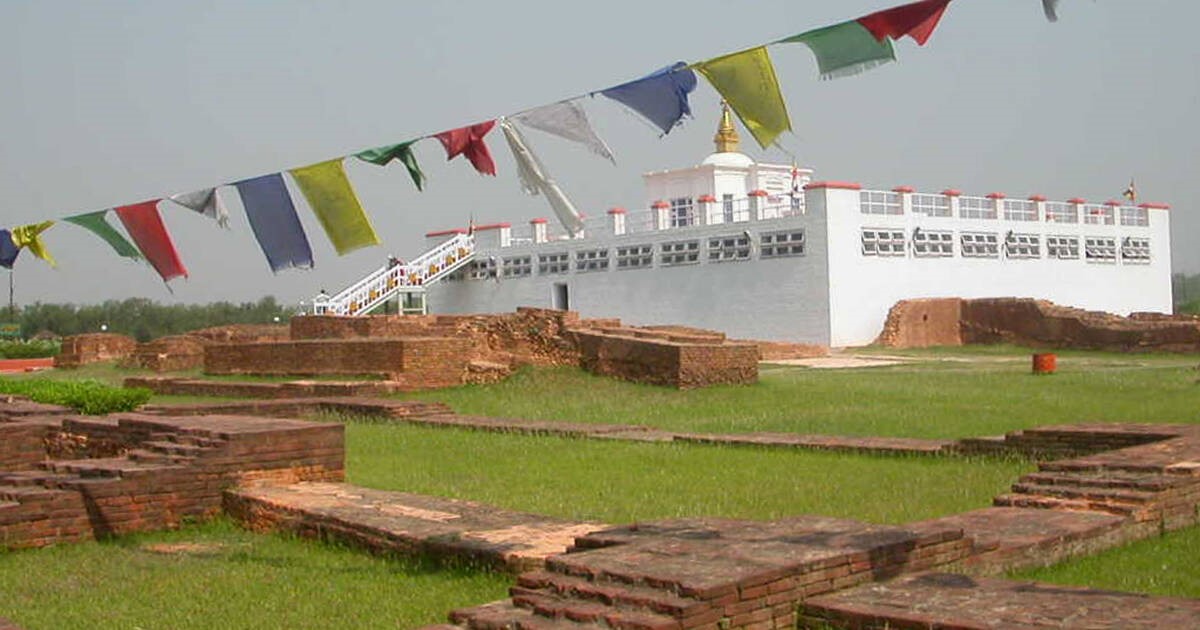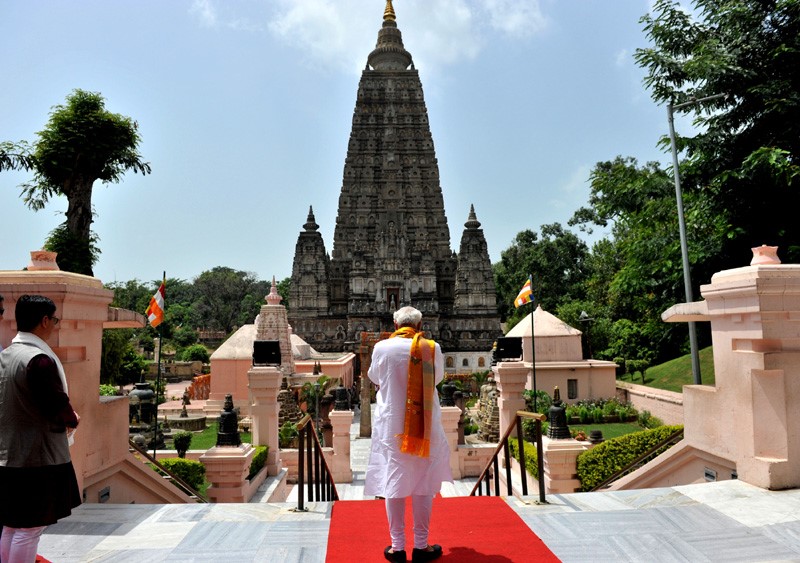Buddhist Heritage Sites in India
By :
Buddhist Heritage Sites in India
May 19, 2022
Every civilization and nation is molded through its culture, traditions, and intellect. India is known worldwide for its diverse cultural heritage that constitutes its building blocks. The advent of Buddhism in the 6th Century BCE is one such phrase that has not only shaped the spiritual history of India but also its intellectual culture. Siddhartha Gautam, who later came to be known as Gautama Buddha, was the son of a ruler of the Sakya clan. Upon confrontation with the plight of the common people in his kingdom, Siddhartha decided to renounce his wealth and comfort and adopted the life of an ascetic.

Stone Sculpture of Buddha
Heritage Sites associated with Buddha’s Life
Purnima or the full moon night of Vaisakh is an important event associated with the life of Buddha. He was born and attained enlightenment and parinirvana all on Purnima. While his teachings have been propagated across the globe, there are four geographical locations that are given utmost reverence – Lumbini (his birthplace), Bodh Gaya (where he attained enlightenment), Sarnath (delivered his first sermon), and Kushinagar (where he attained mahaparinirvana).
- Lumbini (Nepal)
One of the most important pilgrimage sites, Lumbini is the birthplace of Gautama Buddha. Emperor Ashoka built the Ashokan Pillar here upon his visit. The pillar’s inions testify to the historical significance of the place and document its importance as Buddha’s birthplace. A World Heritage Site, the complex includes the Shakya Tank, the remains of Maya Devi Temple, and the Ashokan Pillar. It also contains various stupas (memorial shrines) and viharas (residential monasteries) and Maya Devi pond. The museum within the complex displays artefacts from the Mauryan and Kushana periods.

Lumbini, the Birthplace of Gautam Buddha
- Bodh Gaya (Bihar)
Bodh Gaya, a small town in Bihar, India, reverberates with rich cultural heritage. Birthplace of Buddhism and the place where Buddha attained enlightenment, Bodh Gaya not only attracts Buddhist pilgrims but people from across the world to admire the marvelous Maha Bodhi Temple and the hallowed Bodhi Tree. The Maha Bodhi temple is one of the few remaining brick structures that also make it an architectural marvel of late-Gupta period. The Bodhi Tree which is currently planted in the west of the temple complex was supposedly planted by Emperor Ashoka. The tree resonates with the overall tranquil environment of the complex and conveys a sense of calm and peace. Apart from the main temple and the Bodhi tree, there are numerous structures and stupas associated with the life of Buddha and a Lotus Pond that is located just outside the enclosure. The temple complex was included in the World Heritage Site list in the year 2002.

Hon'ble Prime Minister at Maha Bodhi Temple, Bodh Gaya
- Sarnath (Uttar Pradesh)
Located 10 km northeast of the holy city of Varanasi, Uttar Pradesh, India, Sarnath is an important pilgrim center for Buddhists. It was the lush green lawns of the Deer Park where Gautama Buddha preached his first sermon on Dharmachakraparavartana or the Wheel of Law. The place also witnessed the formation of the Buddhist Sangha (disciples of Buddha). It is believed that in 249 BCE, Emperor Ashoka built the Dhameka Stupa here at Sarnath. He also erected another Ashokan Pillar here, with four lions facing the four directions. The pillar is currently displayed at the Sarnath Museum. The Sarnath Museum is the oldest on-site museum of the Archaeological Survey of India and it proudly exhibits sculptures, inions, paintings, etc., that highlight the glorious heritage of Sarnath. The ancient archaeological site of Sarnath has been suggested by the Archaeological Survey of India to be included in the World Heritage Sites list in 1998 and currently is on the tentative list of UNESCO.

Buddhist Monks at Sarnath
- Kushinagar
It was the town of Kushinagar in present-day Uttar Pradesh where Gautama Buddha gave his last sermon and attained Mahaparinirvana. One finds mention of the town in memoirs and travelogues of Chinese travelers Fa Hien and Hien Tsang who visited Kushinagar. It is through their documentation that various excavations were done that yielded findings of the site. Buddha attained Mahaparinirvana in 486 BC and was cremated at Ramabhar, Kushinagar. His remains were then collected in eight urns and distributed to various stupas. The Mahaparinirvana Temple, which is in the ruins of 5th Century BCE monasteries, is one of the most important structures here. The temple has an approximately 6 meters long statue of Buddha in a reclining position. Apart from this, there are various other structures such as the Mathakuar shrine and the 49 feet long Ramabhar Stupa (currently a brick mound) where Buddha was cremated. The Hiranyavati river provides a serene environment and complements the tranquil atmosphere of Kushinagar.

Statue of Buddha at Mahaparinirvana Temple, Kushinagar
To know more about Buddhist Heritage Sites in India, click here.